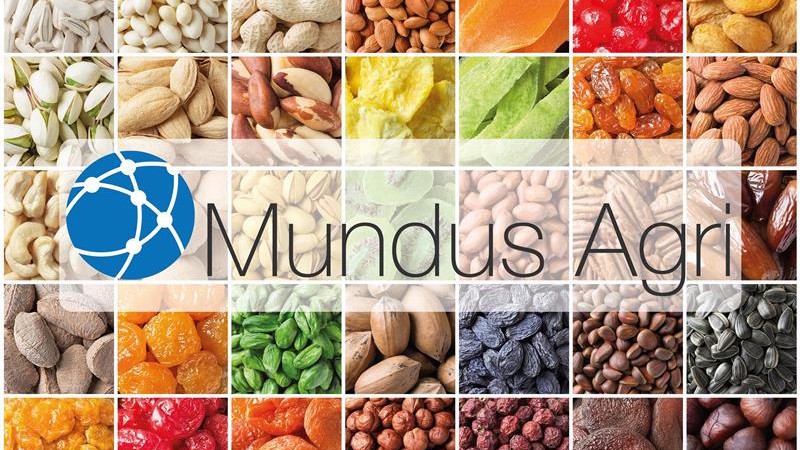Pricing Factors for Hazelnuts from Azerbaijan
September 21, 2018 at 8:49 AM ,
AZERSTAR LLC Hazelnut Ind. Co.

Overview
It may come as a surprise to those who associate the country with oil production, but Azerbaijan has a rich agricultural history. Azerbaijan makes up 4 per cent of world hazelnut production and ranks 5th in the world for hazelnut exports after Turkey, Italy and Georgia. Gardeners cultivate such varieties of hazelnuts as Zagatala (Atababa), Ashrafli, Ghalib, Ganja, Sachagly, Topgara and Yagly. Many of the country's hazelnut orchards are located in the foothills of the Caucasus Mountains in the regions of Gakh, Zagatala and Balakan. Most of the hazelnuts are grown in the small family owned gardens.
Experts say that Azerbaijani hazelnuts earned a reputation of one of the best on the international food market because they are 100% organic and have a high content of oils.
Thanks to favorable weather conditions, Azerbaijan produces high quality hazelnuts. The cultivation, processing and export of hazelnuts are one of the primary sources of foreign currency for Azerbaijan.
Pricing of Azerbaijani Hazelnuts
Azerbaijan started exporting hazelnuts in 1936 when the first processing facility was built in Zagalata. Some historians argue that Azerbaijan was one of the first hazelnuts exporters but the historical fact is not widely known because at the time it was part of the Soviet Union. First, Zagalata processing facility produced only hazelnut kernels. Later, during World War II the facility started pressing nut oil for the soldiers.
The plant was the single supplier of hazelnuts to all confectionery factories in the Soviet Union. Initially, the annual plant production was about 5,000 tons of hazelnuts per year. All sales were under strict state supervision: there were criminal penalties for selling on the black market and smuggling. The Soviet Union started exporting hazelnuts only in the 1970s.
Several factors determine the price for Azerbaijani hazelnuts. To understand what determines the pricing of Azerbaijani hazelnut, let us consider the main factors.
Hazelnut Crop
The crop is the first factor that determines the hazelnut price. High yield lowers the price while low yield causes the shortage and drives the price up. Turkish hazelnut market often determines the price. International demand for hazelnut is about 1 million tons per year when Turkey produces about 600 thousand tons per year.
Turkish Price
Everybody can check the hazelnut prices on the Turkish market. There are many web resources and applications that analyze pricing of hazelnuts in different regions. However, quite often the information is misleading.
Hazelnut pricing depends on supply and demand. On the one hand, how much buyers are willing to pay for it. On the other, at what price the producer is willing to sell. Pricing is in the process of constant negotiation. However, it is more complicated with hazelnut procurement. In fact, European buyers often set and dictate the pricing, but it is another topic of my new article. Lets back to calculations.
Traditionally, hazelnut pricing is calculated in the following way. Multiply Turkish market price (see web resources) by 2 (the ratio of hazelnuts in shell/ shelled = 2/1). Then adjust the price according to the currency exchange rate ( Price x 2/(TRY/USD). The number is an approximate purchase price of the shelled hazelnut in Turkey before the additional costs for processing, packaging, transport, customs, taxes and the exporter's margin.
Market Demand
As a rule, demand for Azerbaijani hazelnuts has several particularities.
Firstly, it is popular in Russia where the pricing can be significantly higher than in Europe. Russian and Azerbaijani companies have a long history of successful economic cooperation even during years of crisis. Russian consumers love its taste and prefer hazelnuts from Azerbaijan for its premium quality. The presence of the Russian market, where the price differences can be as much as USD $1/kg compared to European prices, gives the opportunity of finding a buyer who is willing to pay more than what the Turkish market has set. Overall, as alternative market Russian market significantly influences the pricing for Azerbaijani hazelnuts.
The second factor is the USD/TRY currency ratio, which is a fixed USD. Sometimes due to the fixed prices with the USD rate, Azerbaijani prices seem a bit high in comparison to Turkish prices, but it has a lot to do with the lower exchange rate for the Turkish Lira. Azerbaijani exporters are keeping with the fixed rates, making us very competitive against Turkish exporters, and are seeing increased demand from Europe,"
Thirdly, it is important how reliable is the buyer and what the payment terms.
AZN / USD Exchange Rate
Agricultural exporters source their produce from national farmers and pay in local currency. The purchasing power of the local population is measured in AZN and depends on currency exchange. Due large portion of imported goods, farmers to protect themselves from local currency fluctuations, fix the price in US dollars.
To price their produce, Azerbaijani farmers have to navigate the Turkish market, TRY, USD and AZN exchange rate. From the abovementioned information, the following decisions are made:
1) Pricing is set in US dollar (to manage the risk of sudden devaluation of the national currency);
2) Pricing remains as is (in case the national currency is strengthened).
For example, let’s assume that at the beginning of the season Turkish purchase price is 15 TRY per 1 kilo of hazelnuts in shells.
When we apply the formula: 15 x 2 / 6.56 = 4.57 $ or 7.76 AZN
(TRY 6.56 = 1 $, 1 $ = 1.70 AZN as of September 06, 2018).
The estimated price is used as a reference for the next season with some adjustments the exchange rates.
Let’s assume that the national currency AZN devalued by 10%. If Turkish price did not change, Azerbaijan exporters use the price in dollars (the reasons I described above) and convert it into AZN using a new exchange rate. The price of $ 4.57 will be converted into AZN.
TRY/USD Currency Exchange
Traditionally, Turkey sets the hazelnut market price for European companies depending on the supply and demand.
The provisional price is set at the beginning of the season taking into account the exchange rate TRY/USD. Then the Turkish price is used as a reference point for prices in other countries. The cost of labor and the additional expenses of local farmers also adjust the price. Thus, the price of Turkish hazelnuts serves as a base.
Depending on the local labor and processing costs the pricing can increase or decrease: Italy > Turkey, Georgia < Turkey, Georgia < Azerbaijan < Turkey
“Sometimes, in the middle of the season the pricing changes depending on TRY / USD exchange rate because of Turkish lira depreciation. At that moment, European buyers are surprised to find out that Azerbaijani hazelnuts become the most expensive on the market. “
Let’s model the above-described situation. Turkish price is 15 TRY per 1 kg of products with exchange rates 6.56 TRY =1 USD, 1.70 AZN = 1 USD.
Then in the middle of the season (for some reasons), the Turkish currency depreciated to 6.80 TRY /1 USD.
The pricing in Azerbaijan is fixed in dollars so the producers began to purchase the product at the initially announced price. Let’s assume that Azerbaijani currency remained stable and in such situation for the Azerbaijani producers the price reduction means direct losses. It significantly bites into profitability.
Azerbaijani exporters have to compete with Georgian ones whose pricing is lower because they do not pay European import tax/duties (for Azerbaijan it is additional 3.2%). Taking onto account above mentioned expenses and risks, most of the Azerbaijani exporters struggle to survive at the profitability of 1-2% even though they offer premium hazelnuts.
Media Reports and Rumours
The hazelnut market is full of surprises: it is like an intriguing actions movie with unpredictable twists and turns.
Every year at the beginning of the season there are rumours that the crops are awful or even destroyed in Turkey. At the same time, European experts would estimate the future high yields to exceed the demand. When such contradictory forecasts are published, no one seems to know the real situation. For example, there are no official centralised state or private organisations that report and estimate the hazelnut crop in Azerbaijan. Nevertheless, European sources continue to cite some numbers that can be so far from reality. A word of wisdom: when dealing with such information and rumours, take into account who is the author and whose interests he represents.
What happens is the following: European traders often try to overestimate the crop so the purchase price is lower, while local exporters, representing the interests of the producers and farmers, try to underestimate the yields to drive the price up.
Expenses of Azerbaijani Exporters:
1) Banking Fees.
Depending on the exporter’s reputation and line of the credit, the annual interest rate varies in the range of 8-20% in Azerbaijan. Do not be surprised if you are asked for advance payment or asked for a tight payment schedule. Aside from banking charges, there is withdrawal fee introduced by the government for the purpose of financial transparency and accountability. Azerbaijan government charges 1% on cash withdrawals, and banks charge additional 0,2–0,6% of the withdrawn amount.
Local gardeners are not very familiar with bank system and always prefer payments in cash. In my opinion, it is advisable to offer state subsidies just to the gardeners registered in the unified state system (similar to Turkey) and offer higher purchase prices if the farmer prefers non-cash payments. In any case, the transition from cash to non-cash payments should be as smooth as possible and take into account the interests of both parties.
2) Export Documentation Fee
Export documentation fee is paid for state export certificates and declarations.
3) Shipping Cost
Most exporters prefer to ship by land, but some use sea transportation. The nearest ports are Poti in Georgia and Bandar Abbas in Iran.
The cost of shipping to Europe and the CIS countries differs significantly. The difference can be 2000-3000 USD higher for Europe.
4) Quality of Hazelnuts
Azerbaijan exporters source most of the hazelnuts in the shell from medium and small gardens. Most of the farmers are honest and trustworthy, but there are also cases of fraud: some dishonest producers can mix the old and the new crop, increase product humidity or sell rotten nuts. In unfortunate cases, when the hazelnut exporters buy substandard nuts, it is their responsibility.
Risk of Azerbaijani exporters
Azerbaijani exporters risks include the safety and preservation of quality of hazelnuts during transportation. First of all, I mean the microbiological parameters for products.
According to RASFF, there were 17 cases of aflatoxin contamination in the hazelnuts in 2017 at the European checkpoints. Such cases are registered in other exporting countries, including Turkey and Georgia, where the numbers of aflatoxin cases for 2017 were 52 and 7 respectively.
I want to emphasise that the percentage of such cases are less than 1% for each country. Some European traders like to use false accusations and rumours to redirect the buyer's interest in favor of “his” producers. No particular producer is interested in selling "poisoned" nuts.
In case of aflatoxin contamination, the exporter encounter heavy financial and reputational problems:
1) Additional transportation costs.
2) Stricter control of hazelnuts in Europe and the country of origin.
3) More checks at the European borders (from 20% to 100%).
4) Lost cost of certificate and permits.
5) Financial losses.
In case of replacement of goods, the price can change significantly. The exporter will have to pay for new documentation and transportation paperwork. Most of the European buyers prefer a deferred payment schedule. It can be from 3 days after the goods are delivered to the buyer's warehouses to 60 days. The term "Prompt Shipment" means 21 days from the date of signing the contract to the day of the shipment of goods. The delivery can take about 40 days (+ clearance in Europe, + return transit, + 21 days in case of goods replacement). It means more bank expenses associated with the delay of payment because most companies work with the line of credit with the high interest rate (see paragraph 1 in Expenses of Azerbaijan exporters).
No exporter is interested in delivering "contaminated" nuts. In case of aflatoxin contamination, the exporters suffer astronomical financial losses if the product fails to meet the standards, not to mention the loss of reputation.
“To increase the quality of Azerbaijani hazelnuts, has been formed new Food Safety Agency of the Republic Azerbaijan (afsa.gov.az) that will be in charge of quality not just local goods but also for exported goods. Without the aflatoxin test in state ISO 17024 accredited laboratories, Azerbaijan hazelnuts cannot leave the country. It gives additional peace of mind to exporters and buyers. “
In conclusion, I want to add that cultivation of hazelnuts will continue to grow in significance for Azerbaijan because it is profitable export–oriented sector. I also hope that my article clarified some points about pricing for Azerbaijani hazelnuts. Even though some might consider it high, it is fully justified price for the premium quality nuts.
Regards,
Nizami Emreli





